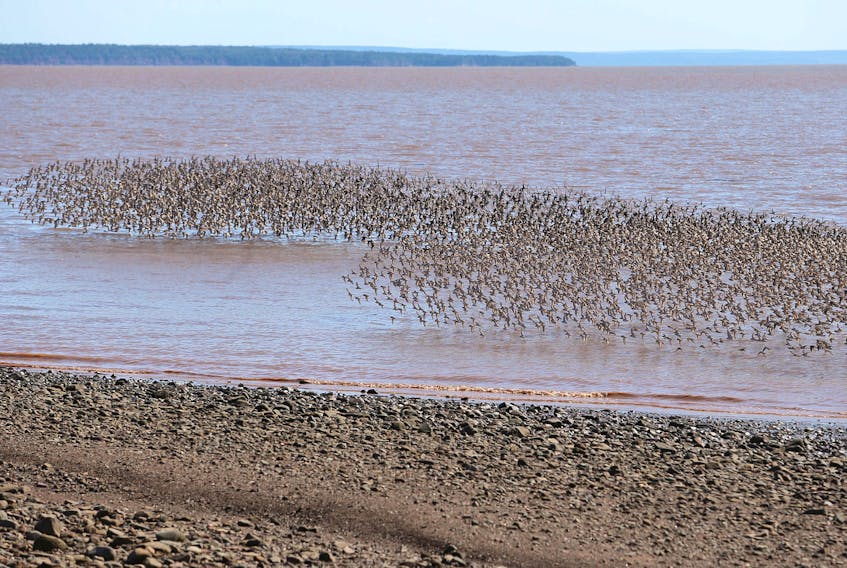JOHNSON'S MILLS – The 12th of July was a super moon, when the new or full moon is at its closest point in its elliptical orbit to earth. Super moons appear brighter and larger than regular moons, hence their nickname. This summer, the unusually high tides that will accompany the super moon will coincide with the arrival of the first semipalmated sandpipers at the Nature Conservancy of Canada’s Johnson’s Mills Shorebird Interpretive Centre, about eight kilometres outside of Dorchester, on the Bay of Fundy.
The upper Bay of Fundy hosts one third of the global population of semipalmated sandpipers each summer, or approximately 290,000-400,000 birds. The Bay of Fundy’s rich mudflats are a critical migratory stopover for these tiny shorebirds, who gorge on mudshrimp and other invertebrates, to store up energy for the next phase of their long migration to South America. These mudflats are like a buffet for birds at low tide; however while the tide is high the birds usually roost on the beaches because they can’t swim.
Although the arrival of the semipalmated sandpipers in the Bay of Fundy from the Canadian sub-arctic is an annual affair, super moons are a relatively rare occurrence and cause the tides to rise higher as the gravitational pull of the moon is much stronger.
The fact that the super moon and the sandpipers’ anticipated arrival fall on the same day this season is causing some to speculate about the plight of sandpipers who find themselves without a space to roost during high tide. There is no need to worry, however, as this won’t be first time the semipalmated sandpipers have had to contend with abnormally high tides. Observations of the birds have been made where they perform a phenomenal display of aerial acrobatics known as “over ocean flocking.” This is where they will fly as a group over the ocean while the beach is unavailable during these instances of extremely high tides.
Fortunately, the majority of the sandpipers will still be in the sub-arctic, so this week’s super moon will only affect a few hundred ‘early birds’ who will likely extend their stay to make up for the energy they will spend in over ocean flocking.
Nature Conservancy of Canada staff welcome visitors to the Johnson’s Mills Shorebird Interpretive Centre this week and throughout the summer, with best viewing typically during the last week of July. The centre and viewing deck are open seven days a week—and best times to visit are from two hours before, to two hours after, the high tide.









